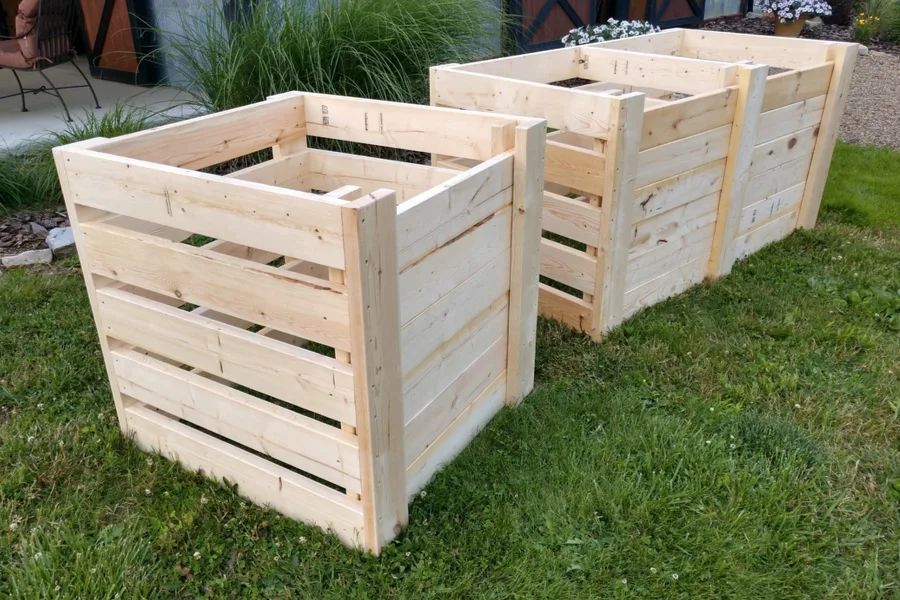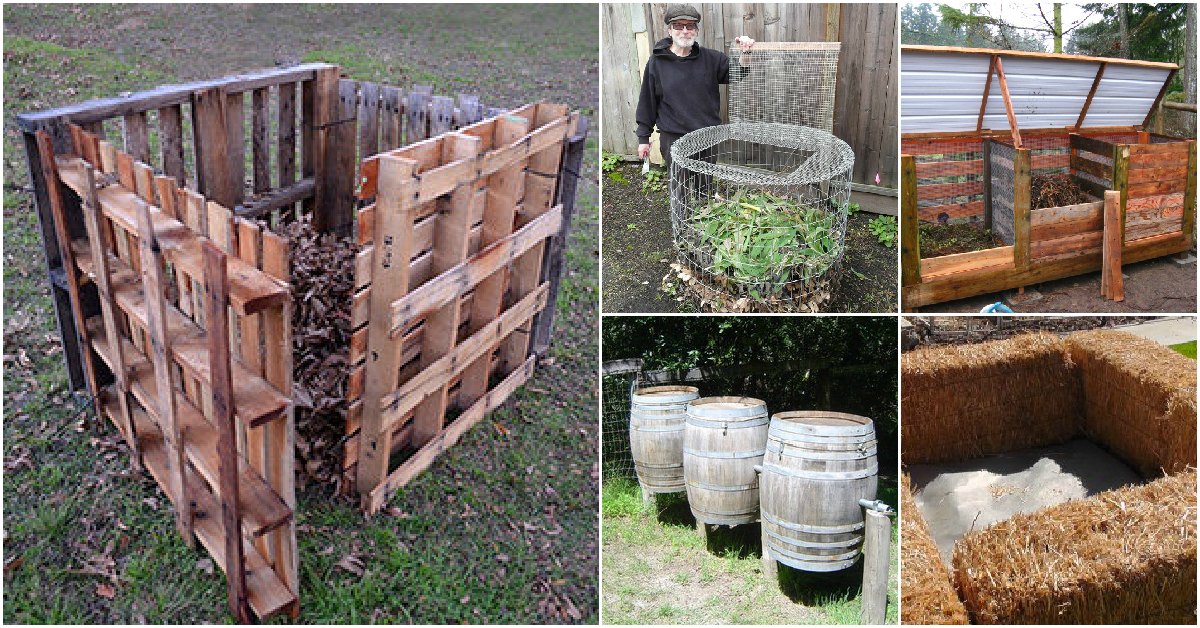18 Cool DIY Compost Bin Designs
Table Of Content

Remove any pesky buildup on the inside walls with a brush. Flip the bin over afterwards and let it dry completely before starting to refill it. If you follow the proper composting protocol and all goes well with the decomposition, there is no need to empty the compost bin for cleaning before the compost is ready. Ready compost has a dark brown or almost black color, like rich soil, a clean, earthy smell, and a crumbly texture. The original organic matter has fully decomposed and is no longer recognizable.
DIY galvanized metal compost bins
On our homestead, we use everything from a compact worm bin and compost tumblers to large 3-bay compost bins. Commercial compost bins are created from all kinds of materials, but even so, wood remains one of the best options around. Not only is it economical, but it also helps with moisture levels in the pile. Some materials, such as newspaper or leaves, should be shredded beforehand, or else they will block the oxygen flow in the compost bin. Aerobic composting systems provides the living conditions for organism that need oxygen to break down organic materials.
Step 3: Build Compost Bin Outer Walls
Simply put, a compost pile is a large heap with layers of green and brown material that are continuously heaped together and turned regularly. Often the pile is directly on bare ground so beneficial fungi and soil microbes can access the material being composted above. This is a no-frills – and as long as you turn it and heap it regularly – no-fuss method. The fastest way to yield finished compost is to build a compost pile all in one day. This way, the pile heats up faster than adding little bits of material at a time.

Building a Yard-Waste-Only Compost Bin
Reducing Trash through Thoughtful Design UW College of Arts & Sciences - College of Arts and Sciences - University of Washington
Reducing Trash through Thoughtful Design UW College of Arts & Sciences.
Posted: Wed, 19 Jul 2017 07:00:00 GMT [source]
I have a million of these plastic bins lying around, and I’m sure there’s at least a couple I could spare to make a compost bin. Reusing materials we already own is the best way to make self-sufficiency projects as sustainable as possible. If you don’t have one of these lying around, they’re pretty cheap to buy and are easy to keep indoors. To create this 3-tier worm compost bin you'll need 3 stackable plastic bin, lid, plastic sheet, and a cork.

The problem with the heap method is that there’s no easy way to access the finished compost underneath recently added materials. That said, we had to ensure the width of each compost bay (or space between the walls) was very precise, since the gates needed to fit on the front side of each. The walls also had to be very straight so the gates could hang square and level. Though they’re fairly light, the gates do put added weight and pressure on the compost bin walls, so I only recommend adding them if necessary. Add green and brown materials to the drum and turn it every three days or so. Place the compost tumbler in a sunny spot and it will process organic materials into humus in about a month.
Aside from compost bins, you can also build fences, garden edgings, and raised beds with this material. Ensure there is enough airflow, and if you’re working with worms, ensure they are fed enough organic waste to thrive. Similarly, feed your compost with appropriate amounts of green and brown matter, adding a little green when it’s too dry and brown when it’s too moist.
Wooden Pallet Planks and Wire Mesh Composter
So, we chose extra sturdy lumber and also added additional support braces to withstand their rubbing. Using the compost in the garden before it has properly cured risks damaging plants. Unfinished compost may contain high levels of organic acids, extreme pH values, or have excess salt content. Unless you live in a very arid climate, try to incorporate a lid into your compost bin design. Lids help prevent rain and snow from turning your compost heap into a wet and soggy mess. This quick and cheap compost bin is made with four pallets attached together with corner brackets and screws.
Stationary bins are usually enclosed by four walls, which also happen to make it more difficult to turn and aerate the pile. It can take many months to get your hands on finished compost. Community composting will allow you to be an active steward of local healthy soils. The Standard in California for commercial facilities is for every pile to attain a temperature of 131 F (55 C) or higher, and maintain that temperature for 15 days.
Disassemble the pallets
To reduce the potential for pests or odors, avoid meat or dairy scraps and always bury food scraps deep within the compost pile. However, manure from chickens, turkeys, cows or horses is rich in nitrogen, and can help your compost pile get to proper temperatures, and make very good compost. A compost bin works by creating the ideal environment for decomposition.
If you think you might need more room to expand later, make sure you leave space for that. You can actually create an open compost pile anywhere in your yard or dig a pit to keep your compost out of sight. So if you have a 5-gallon available, make the most of it by transforming it into a simple bucket compost bin for your kitchen or garden.
Make sure that all the wooden panel are aligned in a row. Take a pallet and stand it on its long edge to form the back edge of the compost bin. Push a stake through the two layers of the pallet at either end, using a sledgehammer to drive them firmly into the ground - about 20-30cm deep. For the front section, we created removable wood slats that can be easily slid into place as needed. In order to create compost quickly, a pile needs to be big enough to generate and hold heat for decomposition. But it also needs to be small enough to be easily turned and maintained.
Add it to your outdoor space in rings around plants or incorporate it into a blend of topsoil, fertilizers, and existing garden soil as an amendment. You can also use actively composting materials in a hugelkultur raised bed, adding them while they are breaking down for later planting. Once you’ve removed these materials, you can start adding compost to your garden beds.
Bokashi composting is an anaerobic composting system that uses fermentation to break down materials. Below, learn how to choose a compost bin and how to get started. This is literally just a wax-covered cardboard box on the ground. The wax keeps the cardboard from breaking down and is moisture-resistant.
Comments
Post a Comment